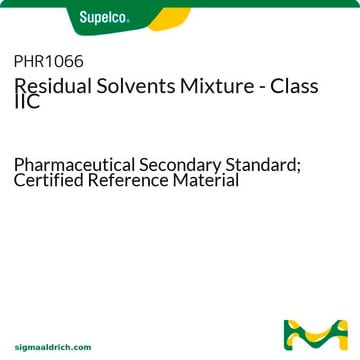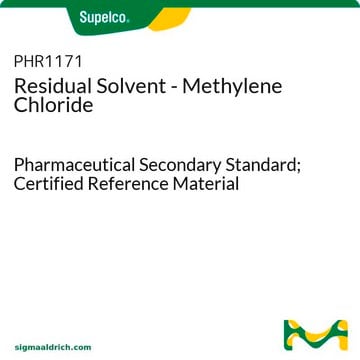1601500
USP
Residual Solvent Class 2 - N,N-Dimethylformamide
United States Pharmacopeia (USP) Reference Standard
Sinónimos:
N,N-Dimethylformamide solution
About This Item
Productos recomendados
grado
pharmaceutical primary standard
fabricante / nombre comercial
USP
aplicaciones
pharmaceutical (small molecule)
Formato
neat
cadena SMILES
N(C)(C)C=O
InChI
1S/C3H7NO/c1-4(2)3-5/h3H,1-2H3
Clave InChI
ZMXDDKWLCZADIW-UHFFFAOYSA-N
Descripción general
Aplicación
Nota de análisis
Otras notas
Producto relacionado
Palabra de señalización
Danger
Frases de peligro
Consejos de prudencia
Clasificaciones de peligro
Repr. 1B
Código de clase de almacenamiento
6.1C - Combustible acute toxic Cat.3 / toxic compounds or compounds which causing chronic effects
Clase de riesgo para el agua (WGK)
WGK 1
Punto de inflamabilidad (°F)
188.6 °F - closed cup
Punto de inflamabilidad (°C)
87 °C - closed cup
Elija entre una de las versiones más recientes:
Certificados de análisis (COA)
It looks like we've run into a problem, but you can still download Certificates of Analysis from our Documentos section.
Si necesita más asistencia, póngase en contacto con Atención al cliente
¿Ya tiene este producto?
Encuentre la documentación para los productos que ha comprado recientemente en la Biblioteca de documentos.
Los clientes también vieron
Nuestro equipo de científicos tiene experiencia en todas las áreas de investigación: Ciencias de la vida, Ciencia de los materiales, Síntesis química, Cromatografía, Analítica y muchas otras.
Póngase en contacto con el Servicio técnico




